Key takeaways:
- Music education should focus on fostering a deep understanding of musical concepts, enabling emotional connections between students and their experiences.
- Teaching for understanding enhances lifelong learning, as students relate music to real-life experiences, enriching their musicianship.
- Engagement strategies, such as incorporating technology, exploring cultural contexts, and collaboration, significantly boost student interest and learning.
- Effective assessment methods, including formative assessments and peer evaluations, provide valuable insights into student understanding and promote collaborative learning.
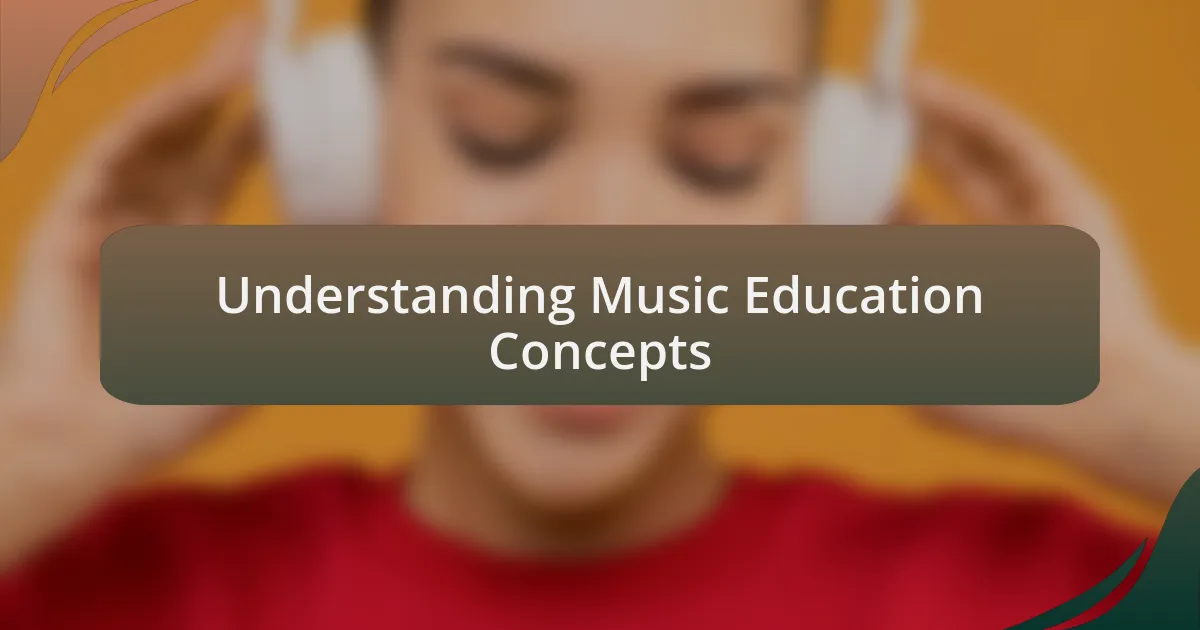
Understanding Music Education Concepts
Music education is more than just teaching notes and rhythms; it’s about fostering a deep understanding of musical concepts. I remember a time when I introduced a complex piece to my students, and watching their eyes light up as they grasped the emotional narrative behind the music was profoundly rewarding. Isn’t it fascinating how a simple chord progression can evoke such a powerful emotional response?
Grasping music concepts requires active engagement, not just passive listening. There was a moment in my classroom when we dissected a familiar song. By analyzing its structure, we transformed superficial enjoyment into a comprehensive understanding. Have you ever paused to think about how songs we love carry deeper meanings that resonate with our life experiences?
Moreover, when students relate these concepts to their personal lives, the impact is profound. I recall one student who used her favorite pop song to illustrate the concept of dynamics, sharing how its ebbs and flows mirrored her own emotional journey. Isn’t it rewarding when education feels relevant and deeply personal?
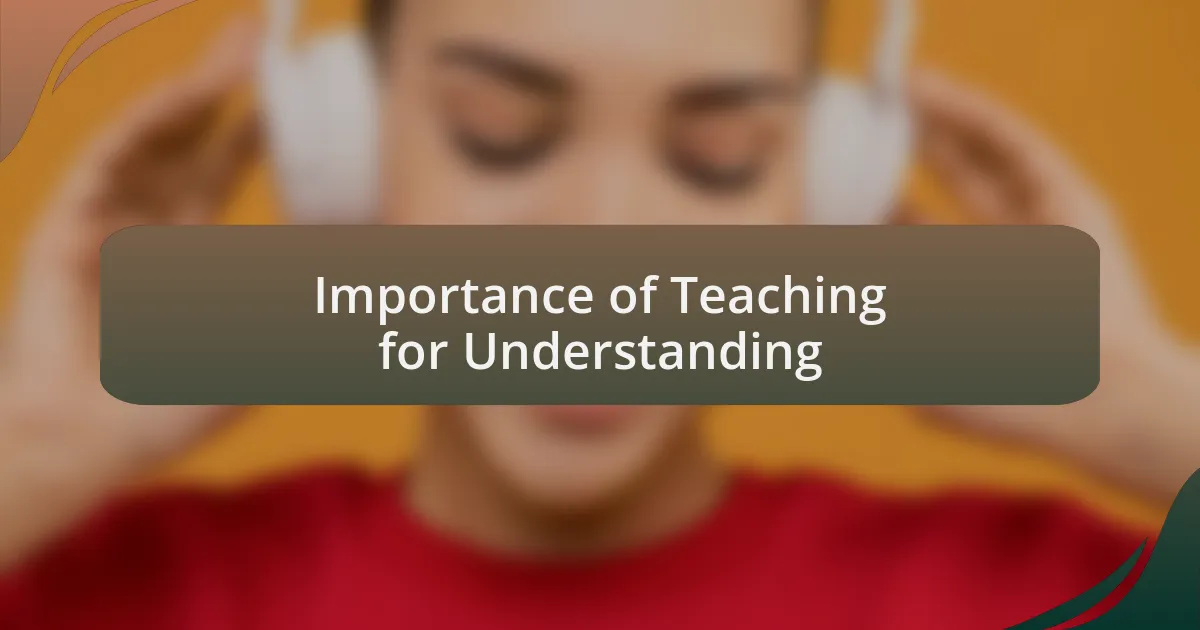
Importance of Teaching for Understanding
Teaching for understanding in music education sets a powerful foundation for lifelong learning. I remember guiding my students through the evolution of jazz, and it wasn’t just facts they absorbed—they felt the pulse of the genre’s history and its connection to freedom and expression. When students understand the ‘why’ behind music, their connection to it deepens, transforming the way they engage with every piece they play or listen to.
One day, while discussing the emotional weight of a Chopin nocturne, a student shared how the piece reminded her of her own struggles with anxiety. This moment highlighted the importance of teaching for understanding: it’s about making music accessible and relatable, rooting it in real experiences. Have you ever wondered how understanding a musician’s intent can change your perspective on the music itself?
Ultimately, when students learn to see music as a reflection of their realities, it empowers them to express their own stories through sound. I find that encouraging this deep connection fosters not just skilled musicians but passionate storytellers. Isn’t it incredible how understanding can transform music from mere notes to powerful narratives rich with emotion?

Strategies for Engaging Students
One effective strategy for engaging students is to incorporate technology into music lessons. I once used an app that allowed my students to create their own beats, blending traditional music with modern elements. This not only sparked their creativity but also made them curious about the technical aspects of sound production. Doesn’t it feel empowering when students take control of their musical learning in ways that resonate with their personal interests?
Another approach is to connect diverse musical genres to cultural contexts. During a lesson on Indian classical music, I shared stories about its origins and significance, which opened a lively discussion. This sparked excitement and a deeper appreciation among students who had never considered how much history is woven into each performance. Have you ever thought about how bridging cultural gaps can enhance a student’s engagement and foster a sense of belonging in the music world?
Finally, I’ve found that encouraging collaborative projects can greatly enhance student engagement. When I had my students work together to arrange a pop song into a choral piece, the energy in the room was palpable. They weren’t just learning notes; they were sharing ideas, negotiating musical elements, and discovering the power of teamwork. Isn’t it rewarding to see students thrive when they can learn from each other while creating something uniquely theirs?
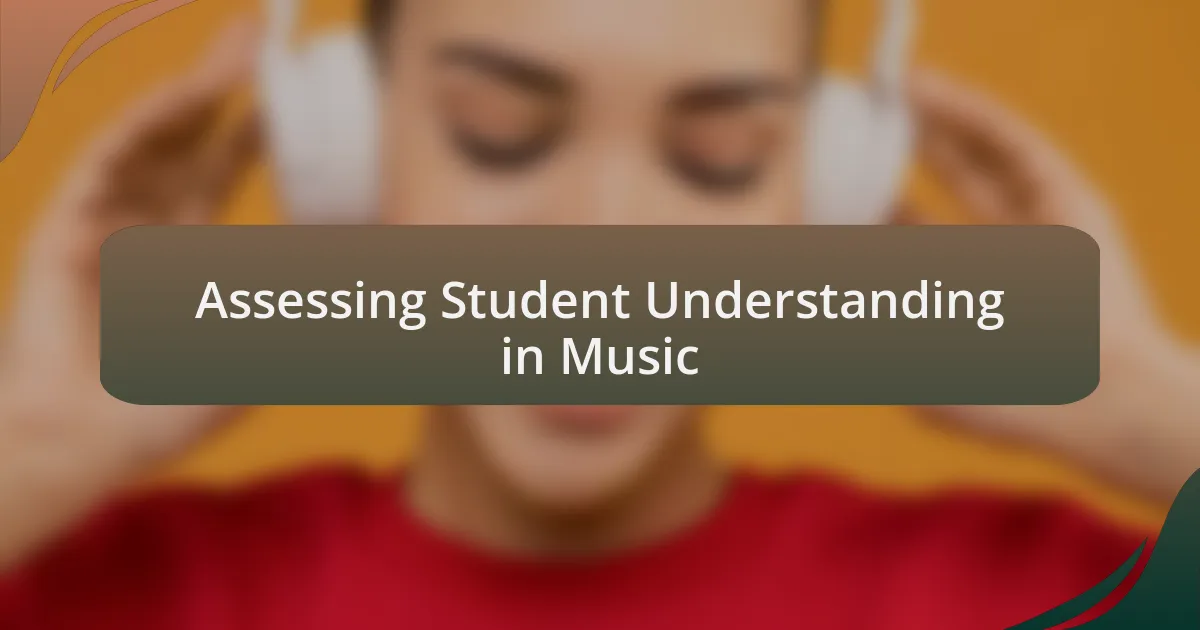
Assessing Student Understanding in Music
To effectively assess student understanding in music, I often use formative assessments during lessons. For instance, after teaching a specific rhythm, I’ll have students clap it back to me. This real-time feedback not only helps them reinforce what they’ve learned but also gives me immediate insight into their grasp of the concept. Have you ever noticed how quickly students respond when they realize their participation can shape their learning experience?
Another method I find valuable is reflective journaling. I encourage students to write about their thoughts and feelings regarding a piece they’re studying. Once, a student shared how a particular melody reminded them of family gatherings, linking personal experience to musical analysis. This connection not only deepened their understanding but also helped me see the emotional landscapes behind their musical interpretations. Isn’t it fascinating how tapping into emotions can reveal so much about a student’s comprehension and connection to music?
Additionally, peer assessment can provide fantastic insights into student understanding. When I pair students to evaluate each other’s performances, I often see them pointing out specific elements like dynamics and expression that I might have missed. During one session, I watched as a student who usually struggled flourished in giving constructive feedback, showing a clear understanding of the music they were analyzing. It’s moments like these that highlight the importance of collaborative learning. Don’t you think observing students evaluate each other can unveil layers of understanding that a traditional test might overlook?
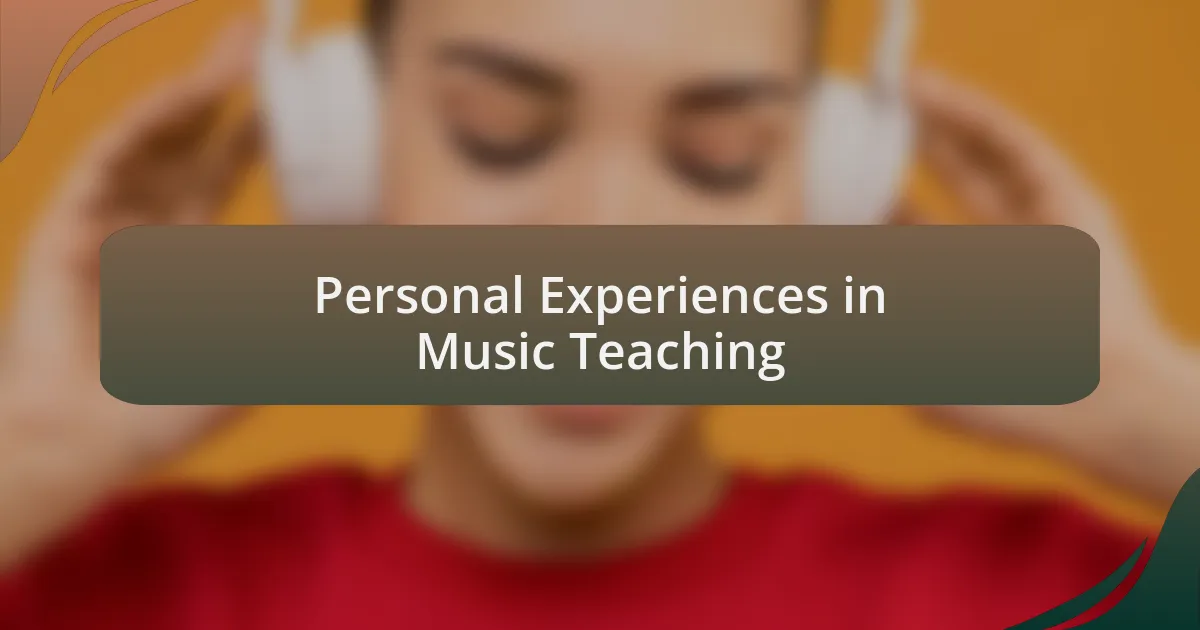
Personal Experiences in Music Teaching
In my early teaching days, I had a student, Sarah, who struggled with pitch recognition. I decided to introduce a game where each of us would sing a note, and the others had to identify whether it was high or low. I still remember the joy on Sarah’s face when she finally got it right; that moment was a clear sign of understanding blossoming before my eyes. Have you ever witnessed that beautiful transformation in a student?
One memorable experience involved a group project where students had to create their own compositions. I watched as they collaborated, bouncing ideas off each other and integrating their unique influences. When they performed their piece, the pride radiating from them was palpable, not just because of the performance itself, but from the journey they had taken together. Isn’t it intriguing how collaboration in music can build both confidence and comprehension?
Reflecting on my experiences, I’ve noticed that bringing real-world connections into lessons profoundly impacts student engagement. For instance, teaching about the blues led to a discussion about its roots in African American history. I could see students connecting the genre to stories they’d heard from their families, making the music feel more relevant and alive. How often do we consider the power of context in deepening a student’s appreciation and understanding of music?
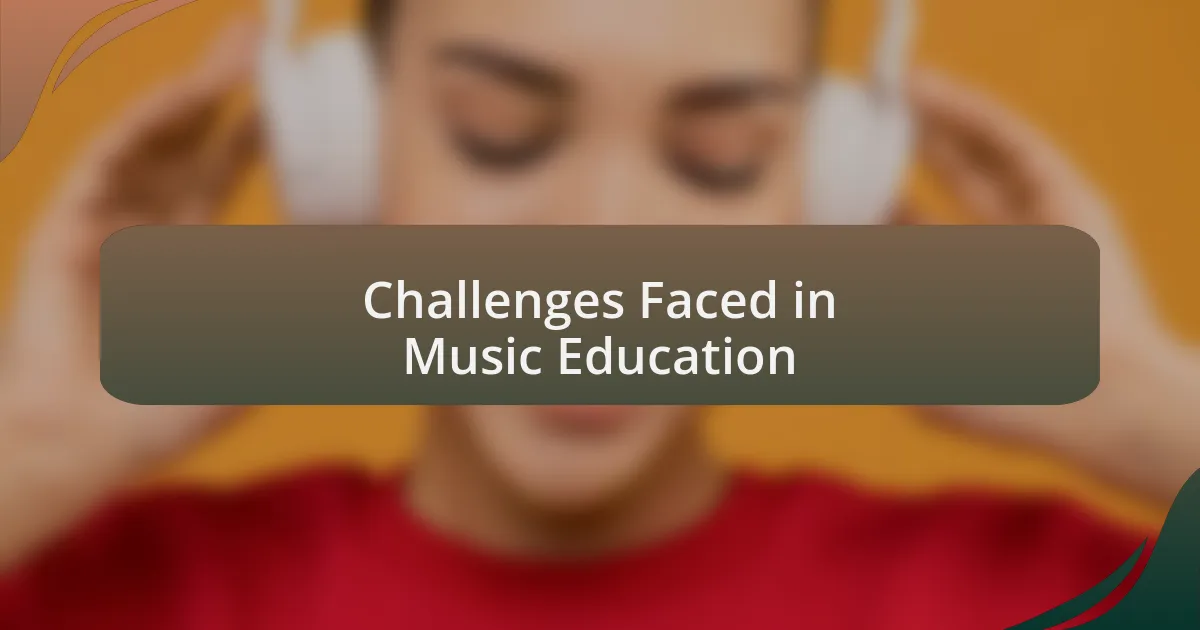
Challenges Faced in Music Education
In my journey through music education, one significant challenge I encountered was the varied levels of student motivation. I had a choir class where some students were enthusiastic, while others seemed indifferent. It was disheartening to see such a divide. How do we bridge that gap to foster a unified passion for music?
Another hurdle I’ve faced is the overwhelming administrative demands that can stifle creativity. During one semester, I found myself so bogged down with paperwork and planning that I barely had time to create engaging lesson plans. I realized that the joy of teaching often gets overshadowed by bureaucracy. Have you ever felt like the administrative side of things dampens your enthusiasm?
Additionally, the perception of music education as less valuable compared to core subjects creates a struggle for resources and support. I recall a meeting where funding for the arts was discussed, and it struck me how often music programs are viewed as expendable. Isn’t it ironic that music can play such a crucial role in developing creativity and critical thinking, yet still finds itself on the chopping block?
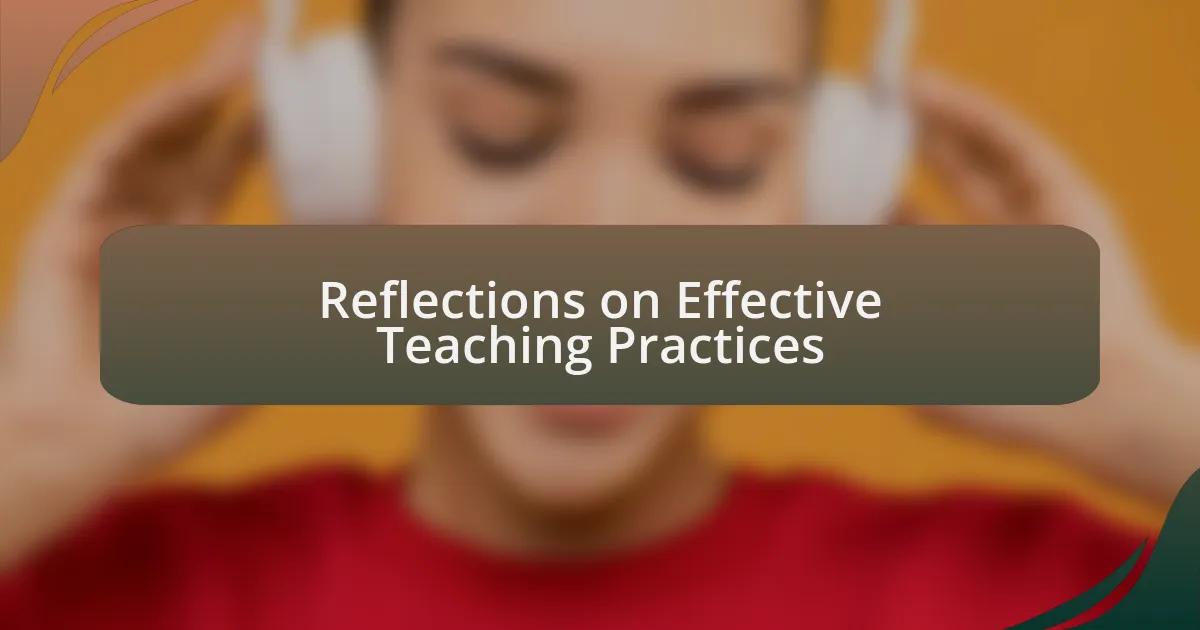
Reflections on Effective Teaching Practices
When I think about effective teaching practices in music education, one strategy that stands out is the importance of active engagement. For instance, I remember a moment in class when I invited students to improvise a short melody together. The energy in the room shifted; suddenly, their faces lit up with enthusiasm. How often do we overlook the power of letting students create rather than simply consume?
Another practice I’ve found invaluable is providing constructive feedback in a timely manner. There was a time when I delayed giving personalized critiques after performances, assuming students would seek me out for guidance. I soon learned this approach left some feeling lost. By offering immediate insights, I noticed students became more invested in their progress. Isn’t it fascinating how a small adjustment in timing can significantly enhance a student’s learning experience?
Lastly, fostering a sense of community within the classroom is crucial. I often set aside time for group discussions where students share their personal connections to music. One day, a shy student opened up about how music helped her cope during tough times. That moment reminded me of the profound impact we can have when we create a safe space for sharing. How can we cultivate such environments that encourage vulnerability and collaboration among young musicians?